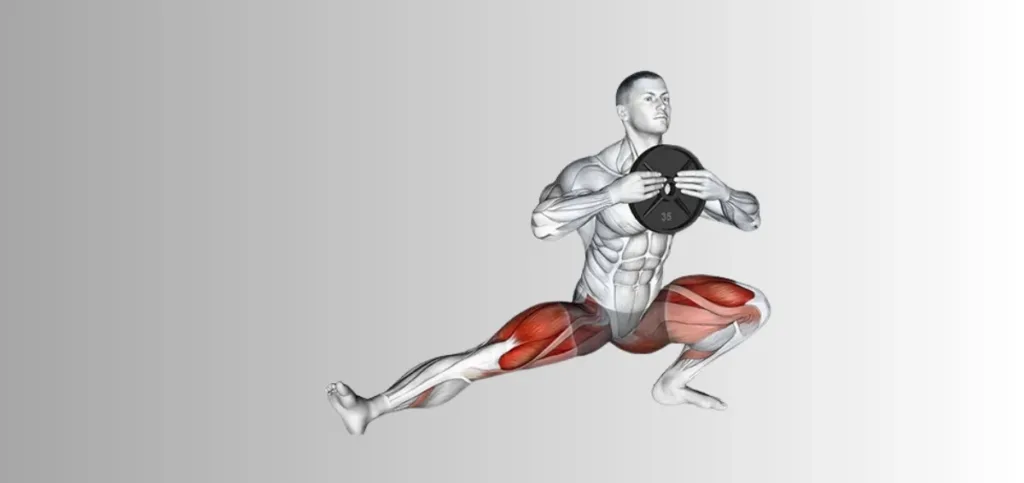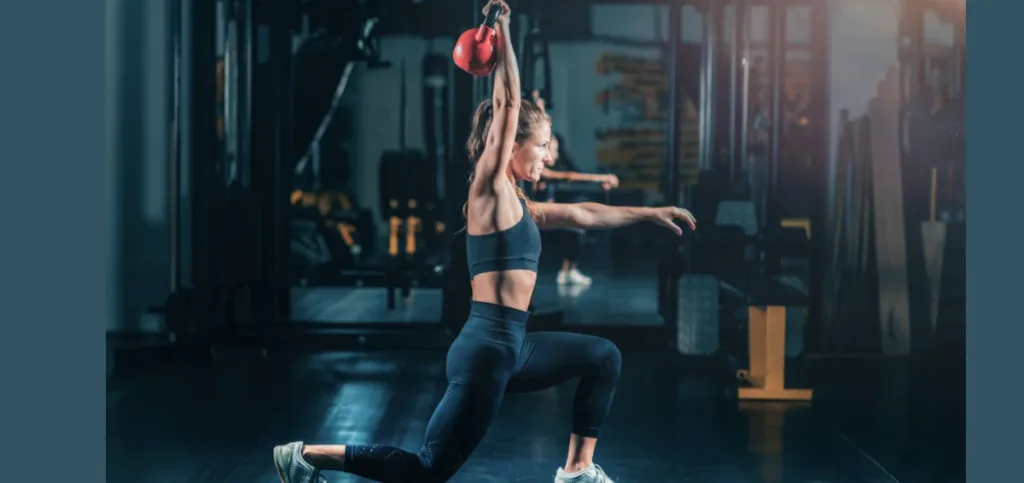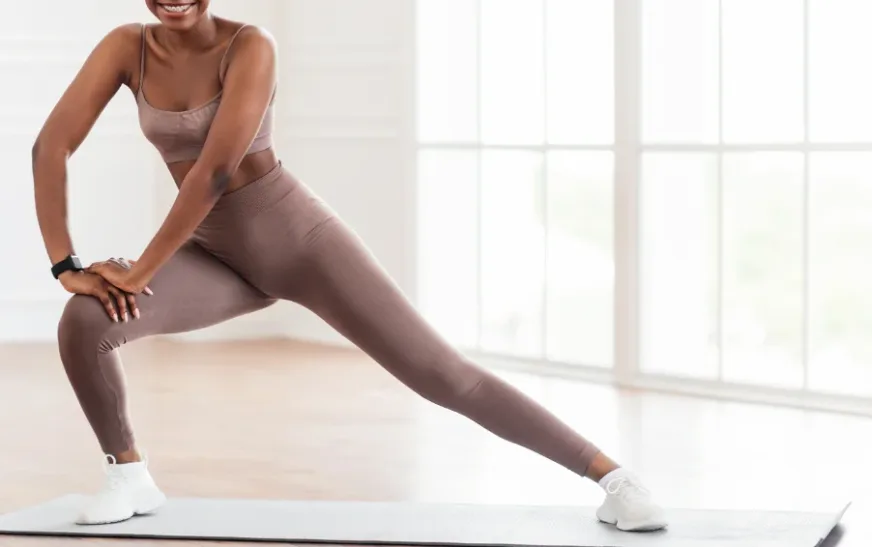
Lunges are a compound exercise that is particularly beneficial for building strength in the lower body. However, it’s common to find gym goers getting caught up in doing regular lunges every day. Not only them, but even those who work out at home often overlook the different ways they can do this exercise.
Side lunge or the lateral lunge is a great variation of the traditional lunge. They target your leg muscles and joints differently, and in this process, increase your overall functional strength greatly.
Let’s look more closely at side lunges and why you should do them.
Are Side Lunges Better Than Regular Lunges?

We would not recommend giving up regular lunges altogether. However, it’s important to know that side lunges offer benefits that traditional lunges do not. Below are the various ways they help.
Better Lateral Stability and Mobility
When you do side lunges, you move your body in the frontal plane. This movement is often missed during the regular front and back motion of regular lunges. Incorporating side lunges helps your body move differently. This helps with balance and rotation.
Greater Muscle Engagement
Side lunges target the glute medius, inner thigh muscles, and outer glutes more prominently than regular lunges. They also target your hamstrings and quads.
Enhances Functional Fitness
The lateral motion in side lunges helps you perform daily activities more efficiently. You can see the difference while playing sports involving side-to-side movements and other activities like twisting and turning.
Suitable for People with Lower Back Problems
Side lunges strengthen your core and back muscles. So, they are a good option for those experiencing lower back pain.
Read Also: 7 Exercises To Do Everyday
How to do a Lateral lunge with proper form?
Side lunges work different angles of your body. But to get their benefits, you must do them in proper form. Follow the instructions below.
- Stand with your feet hip-width apart.
- Take a big step to the side of your body. Keep your chest lifted and your spine neutral.
- When you step out sideways, shift your body weight to the side that you are stepping towards.
- Keep your knee in line with your big toe. Point your toes forward. Keep the opposite leg straight.
- Push off the leg that stepped out. Now, go back to the beginning position
- Alternate the sides.
Top 3 Side Lunge Variations Without Weights
Want to take up your side lunges game but don’t have weights? Don’t worry, these bodyweight lateral lunge variations will ensure that you exercise different muscle groups and enhance functional strength.
1. Bodyweight Cossack Squat

Bodyweight cossack squat builds your lower body strength and balance. The deeper you go down, the harder it becomes. Follow these steps.
- Stand with your feet wider than hip-width apart. Point out your toes slightly.
- Move your weight to your right leg. Bend it until your thigh is parallel to the floor. Keep your left leg straight.
- Your left foot will pivot. Only your heel should be touching the floor. Point your foot upwards.
- Return to the initial position.
- Repeat on the other side.
2. Lateral Lunge with Slide

For this exercise, you can use either sliders or a pair of socks. Just ensure that it helps you glide your leg to the side. Below are the instructions to follow.
- Stand upright with your feet shoulder-width apart.
- Place a slider under one of your legs.
- Now, slide with this leg into a lateral lunge, pushing it outward to the side.
- Return the leg to the starting position.
- Do at least 10 reps on one side before repeating the same on the other leg.
3. Lateral Duck Under
A lateral duck under enhances flexibility and mobility in your lower body. Here’s how to do it.
- Stand with your feet shoulder-width apart.
- Step sideways, pushing your hips back.
- Bring your torso toward the floor to duck under.
- Stand up on the other side.
- Repeat back and forth.
The Best Side Lunge Variations With Weights
Lateral lunges with weights are much more demanding. They burn more calories and help you build explosive strength.
1. KB Front Rack Lateral Lunge
This is an intermediate exercise that challenges your balance and lower body strength. Follow these steps to perform a KB front rack lateral lunge.
- Hold a kettlebell at chest level but on the opposite side of the leg that will bend.
- Take a giant step sideways with one leg. Keep the other leg straight.
- Push your hips back and bend your knee. Keep your chest lifted.
- Drive through your heel to return to the initial position.
- After doing 10 reps on one side, repeat on the other side.
2. Single Arm DB Lateral Lunge with Slider
To perform this exercise, you need a dumbbell and a slider. Increase the weight to make it challenging. Here’s how to do it.
- Hold a dumbbell in one hand of the same leg that you will slide.
- With your feet hip-width apart, place one foot on a slider.
- Slide the foot to the side as your stationary leg bends. Extend the knee of the other leg as much as possible to get into a side lunge.
- Return to the beginning position.
- Repeat on the other side.
3. Goblet Lateral Lunge
The goblet lateral lunge is a compound exercise as it works both the upper and lower body. It also challenges your core strength. Below are the instructions to do it with proper form.
- Stand straight up with your feet hip-width apart.
- Hold a kettlebell racked at chest.
- Take a giant leap to the side.
- Lower down till your thigh is almost parallel to the ground. Keep your other leg straight.
- Drive through your heels and return to the beginning position.
Mistakes to Avoid While Doing Side Lunges
Side lunges are a terrific exercise for your thighs, hips, and glutes. But doing them with improper form or committing the following mistakes will only make you prone to injuries. Let’s go over the top 4 mistakes and how to fix them.
1. Ignoring the Correct Basic Form
Too many individuals perform side lunges with improper form. Two common form mistakes are putting your knees over your toes and rounding your back. When your knees are over your toes, you increase your risk of injury. A rounded back strains your lower back muscles.
How to Fix It?
While doing a side lunge, sit your hips back like you are sitting on a chair. Keep your knee in line with your ankle. Ensure that your back is fully straight. Lift your chest and maintain a neutral spine.
Read Also: Delt Exercises
2. Doing the Movement Too Quickly
If you rush side lunges, you reduce their effectiveness. Your muscles do not get the time to contract and expand properly. It also prevents you from targeting the right muscles.
How to Fix It?
Take your time to complete every rep with control. Check whether you are engaging your muscles fully. Increase your speed only if you feel that you aren’t being challenged enough. You should have a smooth and steady pace.
3. Improper Weight Distribution
It’s common to see people shifting their weight too much backward or forward. This uneven distribution of your body weight can strain your joints. Leaning backwards too much reduces the activation of your quads and glutes. Leaning forward strains your lower back.
How to Fix It?
Keep your weight centered on your working leg. When you go into a side lunge, move most of your weight onto your heel. This will help you maintain balance. It will keep the movement’s focus on the big muscles, which are the thighs and glutes.
4. Ignoring the Stationary Leg
If you keep your stationary leg inactive, it makes you shift your weight incorrectly. It reduces the muscle activation in your stationary leg. This can lead to muscle imbalances.
How to Fix It?
Press into the floor with your stationary leg to stabilize your body. It ensures that both of your legs work, giving you a comprehensive workout. It also increases muscle activation.
Summing up
Side lunges are an effective movement for your entire body. To get the most out of them, incorporate them into your workout at least 2-3 times a week. This will help you get more familiar with the movement. You will soon experience the results in the form of powerful thighs and better functional strength.










